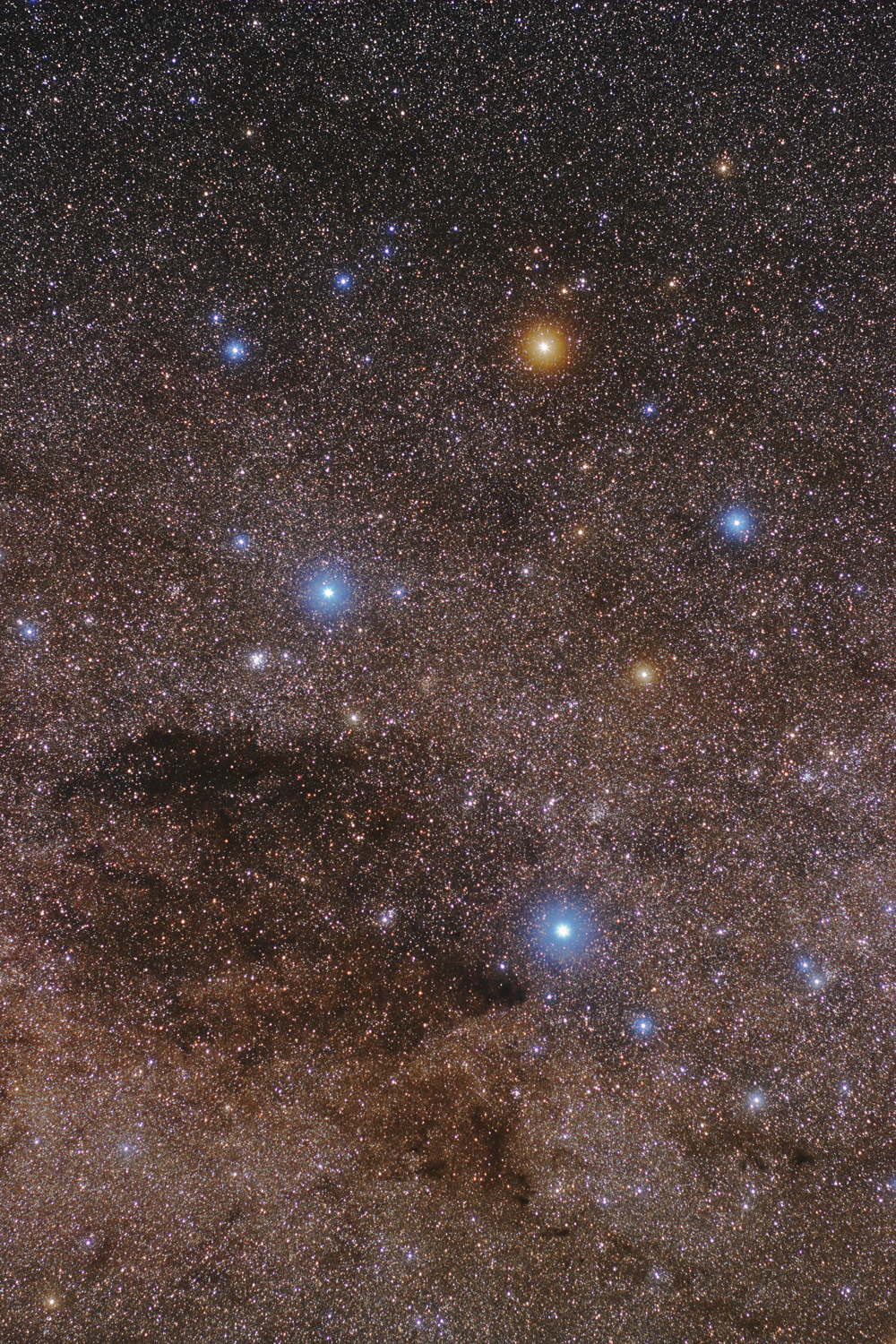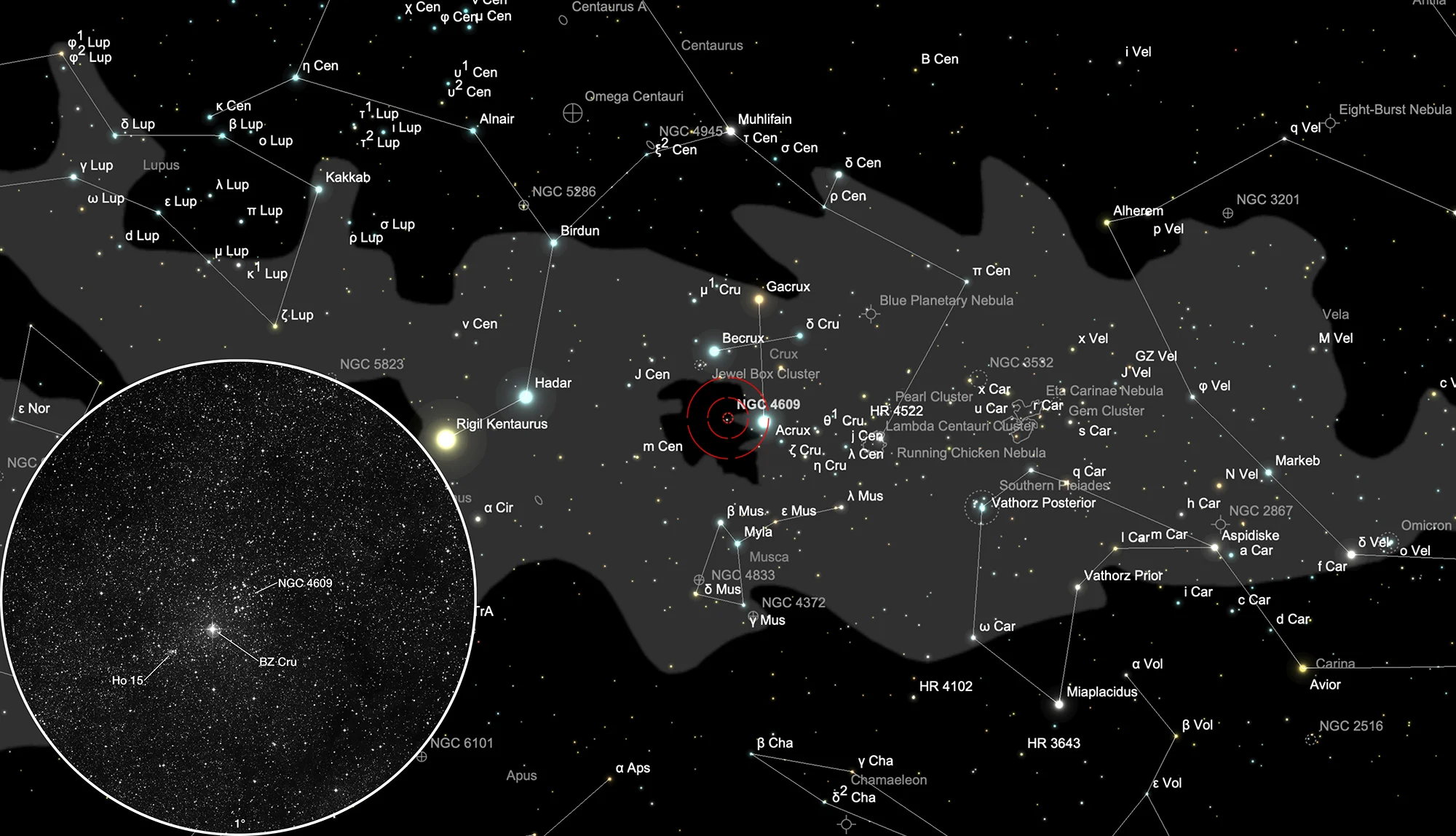Open Cluster NGC 4609 & Coalsack Nebula

Open Cluster NGC 4609
The open cluster NGC 4609 was discovered by Scottish astronomer James Dunlop on 12 May 1826. He observed with his self-built 9-inch reflector from his home in Parramatta (NSW) in Australia. He listed the cluster as Δ 272 and wrote: «A group of five stars of the 8th or 9th magnitude, with a great number of extremely small stars resembling faint nebulae. 3' or 4' diameter.» [50]
John Herschel observed the cluster on 8 March 1837 from South Africa and listed it as h 3407 with the notes: «Cluster class VII. Stars 11..13th mag; about 6' long and 4' broad; has 10 stars 11th mag, and some 20 or 30 smaller. It occurs in the midst of the black space following Alpha Crucis, which is by no means void of stars.» [11]
| Designation | NGC 4609 |
| Type | OCL (II1p) |
| Right Ascension (J2000.0) | 12h 42m 19.8s |
| Declination (J2000.0) | -62° 59' 38" |
| Diameter | 6 arcmin |
| Visual magnitude | 6.9 mag |
| Metric Distance | 1.223 kpc |
| Dreyer Description | Cl, pL, pC, cE, st 10 |
| Identification, Remarks | h 3407; GC 3145; OCL 890; ESO 95-SC14 |

Coalsack Dark Nebula
This is the most prominent dark nebula visible in the night sky. It was first reported to Europe in 1499 by Spanish explorer Vicente Yáñez Pinzón. The Coalsack Dark Nebula (or simply: Coalsack) was also nicknamed the «Black Magellanic Cloud, a reference to its dark appearance in contrast to the bright glow of the two Magellanic Clouds.
The Coalsack is a dense concentration of interstellar dust at an estimated distance from Earth of approximately 189 parsecs. It completely obscures the light from stars and other objects located behind it. Many of the dust particles within dark nebulae are coated with frozen water, nitrogen, carbon monoxide, and other simple organic molecules. These coated grains are highly effective at blocking visible light, making the nebulae appear opaque. To illustrate just how dark the Coalsack truly is, Finnish astronomer Kalevi Mattila published a study in 1970 estimating that it has only about 10 percent of the brightness of the surrounding Milky Way. Still, a small amount of background starlight manages to filter through. The small amount of light that does pass through the nebula appears redder than it normally would because the dust within dark nebulae absorbs and scatters blue light more effectively than red light. As a result, the stars viewed through the nebula take on a noticeably redder hue than they would in the absence of the dust.
Millions of years from now, the Coalsack’s darkness will come to an end. Dense interstellar clouds like the Coalsack are rich in gas and dust—the essential ingredients for star formation. As this material gradually collapses under the force of gravity, new stars will begin to ignite. When that happens, the dark nuggets of the Coalsack will seem to catch fire, as if sparked by a cosmic flame. [269]
Finder Chart
The open cluster NGC 4609 is located in the constellation Crux within the Coalsack nebula. Unfortunately it is not visible from Europe. On 2 April it in opposition with the Sun and is therefore highest in the sky at local midnight.
